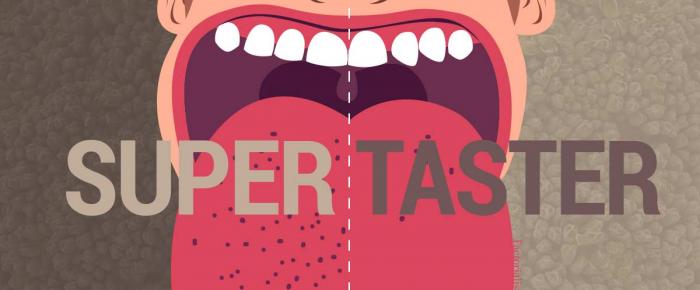
February 15, 2018
By FEMA Staff
Farsighted, nearsighted, and 20/20 all represent your vision identity. But where do you fall on the taste-scale? Scientists refer to three categories to describe your tasting ability: supertaster, medium-taster, or — oh my — a non-taster.
As you can imagine, a non-taster is someone who has less taste perception than, say, a medium-taster who has an average ability to sense different flavors. Along these lines, supertasters are those who experience taste with far greater intensity than most others.
Supertasters
The term was coined in the 1990s by experimental psychologist Linda Bartoshuk as she discovered the varying taste responses of the individuals tested in her laboratory. Upon further examination, she found the tongues of the more sensitive testers were densely populated with fungiform papillae (taste buds), giving them a stronger ability to taste what others could not.
For supertasters, sugar is sweeter, sodium is saltier, and bitterness is almost intolerable. Coffee, hard liquor, sweet desserts, and green vegetables often make supertasters turn up their nose. One thing they do enjoy is salt, since sodium has the ability to block the bitterness that supertasters are extra-sensitive to.
Health Implications
In most cases, supertasters tend to be fitter than medium- or non-tasters, largely due to their strong dislike of fatty foods and are satisfied with less sugar. However, since most supertasters find vegetables distasteful, they tend to use more salt, which may lead to a greater risk of colon cancer and heart disease.
So what do scientists recommend? The well-known advice, “Eat less fat and more fruits and vegetables,” clearly is not heeded by everyone. Some dietitians now use a taste survey or test to determine a patient’s likes and dislikes, and they can therefore tailor their dieting advice accordingly. For example, a supertaster may not like kale and Brussels sprouts, so dietitians might suggest sweet potatoes or squash instead. Some supertasters have found that adding salt to grapefruit or sugar to Brussels sprouts helps reduce the extreme flavors they experience with these foods.
Test Your Taste
You can test your taste abilities too by answering survey questions regarding your eating preferences, or by conducting your own fungiform papillae count test. To do so, simply apply a drop of blue food coloring to the tip of your tongue and count the number of raised pink papillae in a confined area. Some home tests, such as the one mentioned in this Word of Mouth blog post by The Guardian, suggest placing a ring-binder re-enforcer sticker over your tongue and counting the number of taste buds within the circle. If the number exceeds 30, you are a supertaster!
Well, it’s not always that easy, says Virginia Utermohlen, associate professor of nutritional sciences at Cornell University. She tells The Guardian that "In addition to the number of taste papillae, we also have to take into account their sensitivity." To truly determine supertaster status, Dr. Utermohlen recommends trying propylthiouracil (PROP), a common drug used to treat overactive thyroids. If you find PROP to be awfully bitter, you are a true supertaster, whereas most medium- or non-tasters sense no flavor at all when given PROP.
Super Trends
Scientists report that supertasters make up a quarter of the population, where non-tasters make up another quarter, and medium-tasters comprise the other half. Some 35 percent of women and 15 percent of men are supertasters, and people of Asian, African, and South American decent have a stronger chance at being a “super.”
The Flavor and Extract Manufacturers Association of the United States (FEMA) was founded in 1909 and is the national association of the U.S. flavor industry. FEMA’s membership is comprised of flavor manufacturers, flavor users, flavor ingredient suppliers, and others with an interest in the U.S. flavor industry. The association is committed to ensuring a safe supply of flavor ingredients used in foods and beverages enjoyed by billions of men, women, and children around the world.